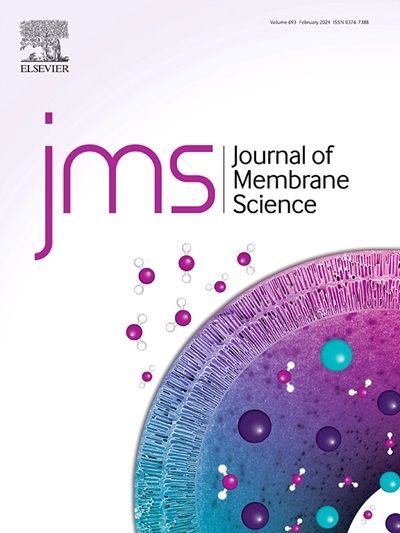On the role of crystal-liquid interfacial energy in determining scaling, nucleation and crystal growth in membrane distillation crystallisation
IF 8.4
1区 工程技术
Q1 ENGINEERING, CHEMICAL
引用次数: 0
Abstract
While the interfacial energy (σ) of a solute contributes toward the excess surface free energy requirement for nucleation, its role in determining scaling, nucleation and crystal growth processes within membrane distillation has yet to be described. Highly soluble salts (low σ) are generally understood to possess a low nucleation energy, where the limited relative supersaturation can favour a heterogeneous primary nucleation mechanism. This was indicated by scaling, which is generally presumed to occur in response to the membrane substrate lowering the critical Gibbs free energy requirement for nucleation (ΔG∗). For less soluble salts (high σ), primary nucleation was not observed until exceeded a threshold of 1. It was postulated that the excess chemical potential available was sufficient to favour homogeneous primary nucleation in the bulk solution, which mitigates scale formation on the membrane. In-situ characterisation methods also established how nucleation rate and crystal size could be directly attributed to the σ, which is compatible with the crystallisation literature on aqueous salts within a comparable range of solubilities. While crystallisation tends to be controlled by a combination of thermodynamic and kinetic processes, this study illustrates how interfacial energy (a thermodynamic quantity) can be used to anticipate nucleation and crystal growth mechanisms in membrane crystallisation.

求助全文
约1分钟内获得全文
求助全文
来源期刊

Journal of Membrane Science
工程技术-高分子科学
CiteScore
17.10
自引率
17.90%
发文量
1031
审稿时长
2.5 months
期刊介绍:
The Journal of Membrane Science is a publication that focuses on membrane systems and is aimed at academic and industrial chemists, chemical engineers, materials scientists, and membranologists. It publishes original research and reviews on various aspects of membrane transport, membrane formation/structure, fouling, module/process design, and processes/applications. The journal primarily focuses on the structure, function, and performance of non-biological membranes but also includes papers that relate to biological membranes. The Journal of Membrane Science publishes Full Text Papers, State-of-the-Art Reviews, Letters to the Editor, and Perspectives.
 求助内容:
求助内容: 应助结果提醒方式:
应助结果提醒方式:


